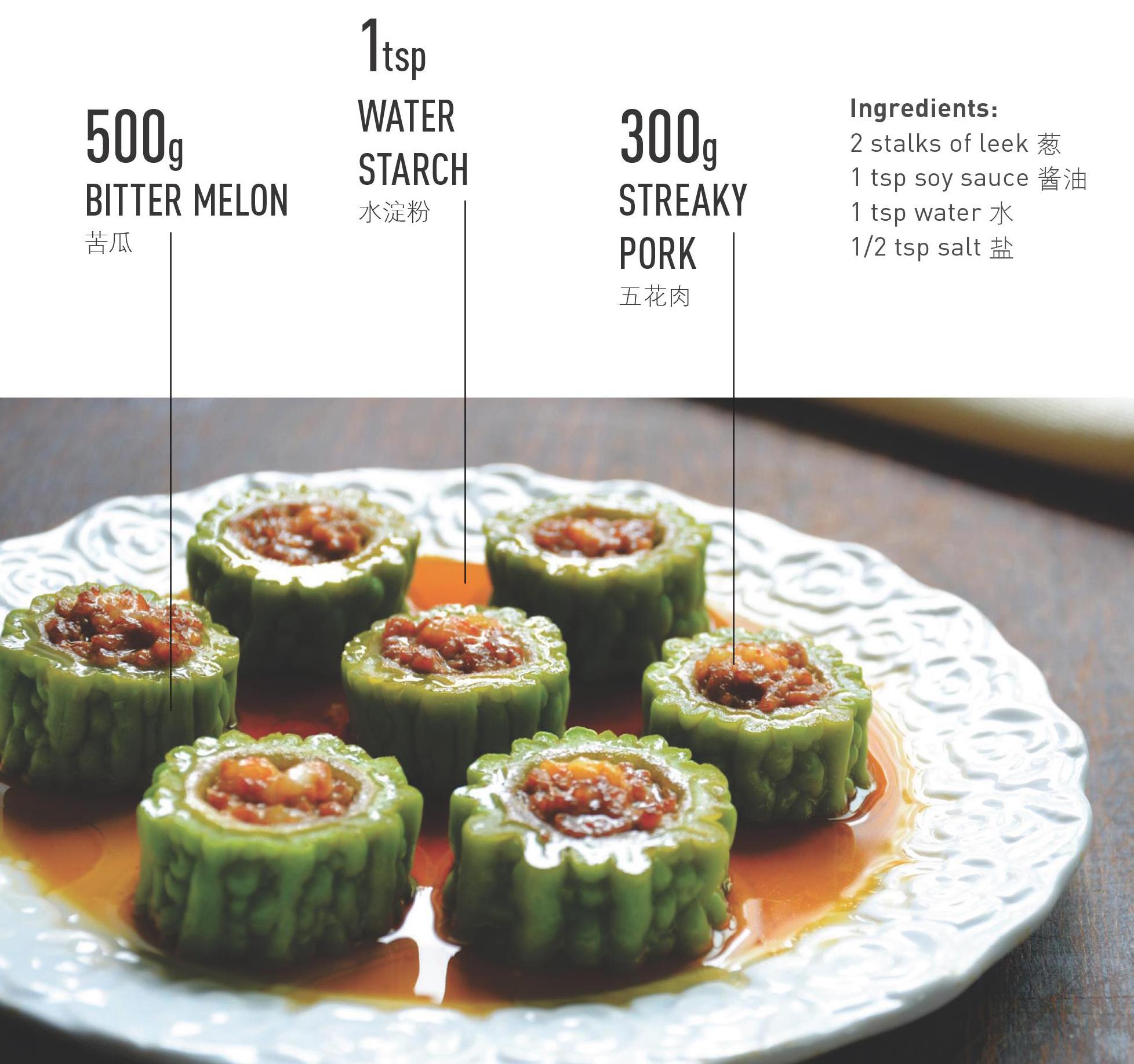EATING BITTER
2019-11-11谭云飞
谭云飞

A polarizing Hakka dish that relieves the heat
客家名菜酿苦瓜:美味又营养的夏日佳肴
Its said that theres no food in Hakka cuisine that cant be niang (酿, ni3ng)—stuffed with meat, then braised or steamed. The classic Hakka cooking method was allegedly derived from the itinerant peoples love of jiaozi. However, there was no flour available for making these traditional northern dumplings once the Hakka migrated to southern China.
Instead, they made do by stuffing other things: Today, tofu, eggplant, and bitter melon are the three most niang-ed dishes in Hakka cuisine, and stuffed bitter melon, or niangkugua
(酿苦瓜), is particularly renowned for its medicinal properties and refreshing taste in the summer.
Its also the toughest to get excited about, as the singular flavor of kugua makes it a deeply divisive dish. Bitter melon was first recorded in JiuhuangBencao (《救荒本草》), a 15th century manual on herbs and foods to eat during a famine. It was believed to have been brought to China from Southeast Asia in the early Ming dynasty—specifically, some legends say, by naval explorer Zheng He.
Different varieties of the melon had different names, most related to their wrinkled appearance—laiputao (癞葡萄, “scabby grape”), jinlizhi (锦荔枝, “beautiful lychee”) and laigua (癞瓜, “scabby gourd”)—but the best-known is lianggua (涼瓜, “cool gourd”) for the melons classification as a “cool” food within Traditional Chinese Medicine (TCM).
In DiannanBencao (《滇南本草》),
a Ming TCM almanac, bitter melon is recommended for “clearing the pathogenic heat…[and] relieving summer heat, tension and thirst,” among other functions. Once only grown in the mild regions of the south for harvest between July and October, bitter melon is now consumed year-round all over China once its turned green or slightly yellow.
Niangkugua is popular in major Hakka settlement regions—Guangdong, Guangxi, Jiangxi, and Fujian—as well as Hunan and Sichuan provinces. The fiber and protein-rich melon is also calledjunzicai (君子菜, “noble food”) since, ideally, the melon does not transfer its bitterness, but gives the other ingredients a fresher aroma and flavor. However, those who follow TCM guidelines on “hot” and “cool” foods should avoid eating too much kugua at one sitting, especially if they suffer from a yang deficiency.
Some recipes recommend curing the melon with salt, or blanching it in water, to alleviate the bitter taste before cooking. Others find this a sacrilege. As journalist and writer Li Junwei comments in his essay “Eating Bitter Melon,” taking any steps to eliminate the bitterness is like “buying the box and discarding the pearls.”
Steps:
1. Cut a clean bitter melon into 3-to-5 cm segments, removing the pulp
and seeds from the core
2. Boil the segments in water for two minutes, then remove and drip-dry
3. Clean and chop the pork and leeks finely, then mix evenly with salt
and soy sauce to make the stuffing
4. Fill the hollowed melon segments with the stuffing; press the
stuffing in tight with a spoon
5. Steam the stuffed melon on a plate for 40 minutes over high heat
6. Pour broth collected on the plate into a wok, adding starch and water, then
boil into a sauce
7. Drizzle sauce over melon and serve
Ingredients:
2 stalks of leek 葱
1 tsp soy sauce 酱油
1 tsp water 水
1/2 tsp salt 盐
